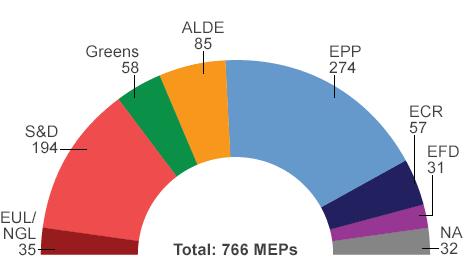Guide to the European Parliament: Party groups
- Published

EPP - European People's Party (Christian Democrats)
S&D - Progressive Alliance of Socialists and Democrats in Europe (centre-left)
ALDE - Alliance of Liberals and Democrats for Europe (liberal)
EUL/NGL - European United Left-Nordic Green Left (left-wing)
Greens/EFA - Greens/European Free Alliance (Greens and regionalists/nationalists)
ECR - European Conservatives and Reformists Group (right-wing)
EFD - Europe of Freedom and Democracy (Eurosceptic)
NA - Non-attached (MEPs not part of any group)
At the 2014 European elections the total number of MEP seats is being reduced to 751, in line with the Lisbon Treaty.
Most MEPs belong to one of the parliament's political groups. None has an overall majority, so amendments need the support of more than one group to get through. On most issues the parliament divides along classic left-right lines.
In recent years the parliament has grown, taking in MEPs from new member states - Bulgaria, Romania and Croatia.
For a group to be recognised, it needs at least 25 MEPs from seven different countries.
The larger the group, the more funding it receives, the more key committee posts it gets and the longer it can speak in debates.
Some groups remained broad churches after the 2009 European election. The new Socialist group expanded to include some Italian MEPs who used to sit with the liberals.
But the British Conservatives left the EPP-ED, regarding it as too enthusiastic about EU integration. The Conservatives lead the European Conservatives and Reformists Group, which includes right-wing MEPs from the Czech Republic and Poland.